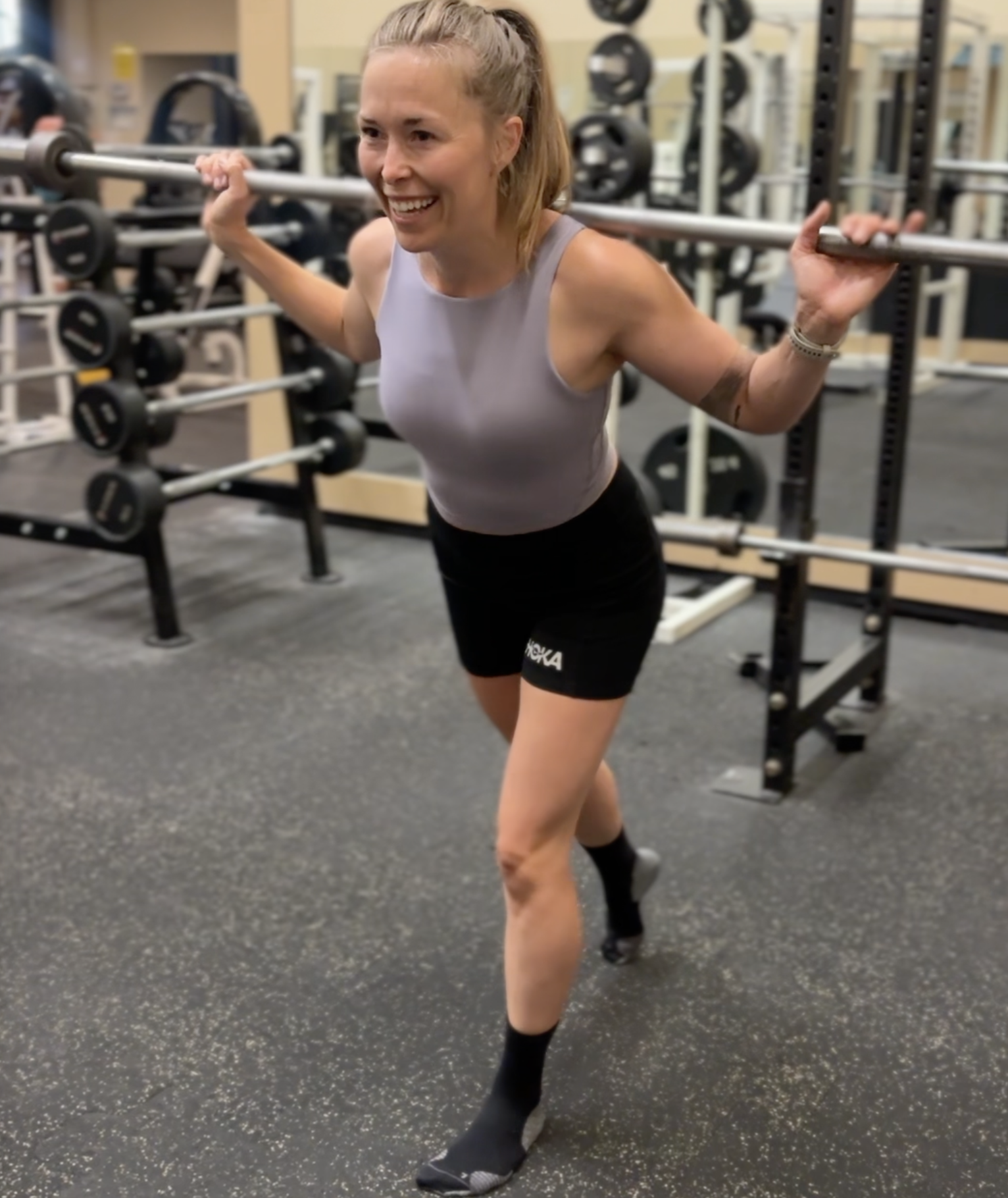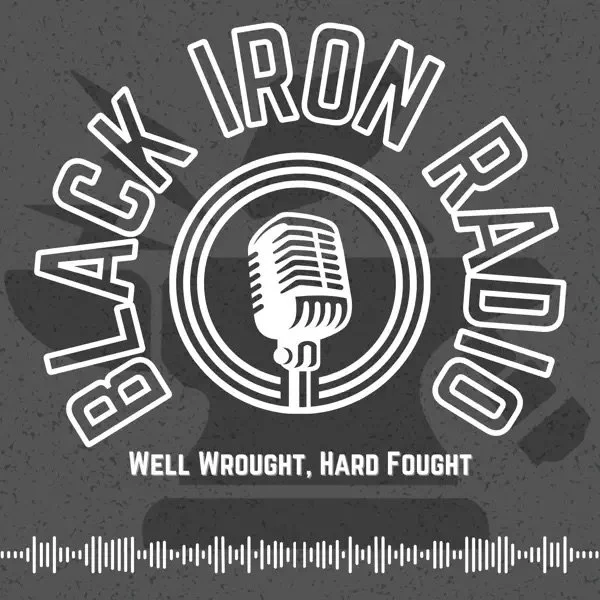So You Want to Stay Injury Free
In this blog post, we’re breaking down the essential takeaways from our latest episode of Black Iron Radio, where coaches Whitney, Chelsea, and Krissy share practical strategies to help you stay injury free. Whether you’re a runner, lifter, skier, or multi-sport athlete, this conversation dives into what really matters when it comes to avoiding injuries—like sleep, nutrition, stress, and recovery—and what to do when something starts to feel “off.” If you’ve ever pushed through pain or wondered if a nagging ache could turn into something more, this episode will help you train smarter, recover better, and stay in the game longer.
BLACK IRON RADIO EP. 242: SO YOU WANT TO STAY INJURY FREE
Getting hurt isn’t always bad luck—sometimes it’s bad habits. In this episode, Krissy, Chelsea, and Whitney break down what actually keeps athletes injury-free. They talk about why sleep, stress management, food, and training consistency matter more than trendy recovery tools, how to tell the difference between soreness and a niggle, and why most overuse injuries are totally preventable. They also cover sport-specific insights for runners, skiers, and lifters.
Whether you’re coming back from injury or just trying to stay strong through your training block, this one is for you.
📲 Listen & Subscribe: Apple Podcasts | Spotify
Injuries are a part of sport—but they don’t have to be inevitable. In this episode of Black Iron Radio, performance nutrition coaches Whitney Dorin, Chelsea Minty, and Krissy Harclerode tackle the often-overlooked basics of staying injury-free. They talk from experience—as athletes, coaches, and in Whitney’s case, as a Doctor of Physical Therapy—about what actually works when it comes to preventing injury across mountain, strength, and endurance sports.
Spoiler: It’s not fancy recovery tools or TikTok mobility hacks.
The Basics: What Actually Keeps You Injury Free
It’s the simple stuff that most people ignore—sleep, nutrition, hydration, and stress management.
Whitney calls these the “unsexy fundamentals” that make up your recovery foundation. No gadget or modality can replace being well-fed, well-rested, and not constantly fried from stress.
Sleep is when your body does the majority of repair work. Skimping on it makes you mentally foggy, physically floppy (yes, floppy), and way more prone to rolling an ankle or making a dumb decision mid-race.
Nutrition fuels the rebuilding process. Not eating enough—especially around training—creates a perfect storm for injury, burnout, and stagnation. It’s not just about the amount, but also timing your intake to support performance and recovery.
Hydration supports everything from joint health to energy levels.
Stress management matters because your body doesn’t know the difference between a fight with your partner and a 20-mile long run. It all lands in the same bucket.
Don’t Stack the Stress
Life stress, training stress, poor sleep, not enough food—it all adds up. And when that bucket overflows, something usually gives. Whitney sees it in her clinic all the time: people under mental strain take longer to heal from physical injury.
Chelsea puts it bluntly: “Something’s gotta give. And this time, it was your body.”
Injury Isn’t Always a Mystery—Sometimes It’s Math
Volume increases that are too big, training plans you can’t realistically follow, or stacking hard workouts on poor sleep—it all sets the stage for injuries. Consistency beats intensity, and your training plan should reflect your actual life, not the fantasy version of it. As Krissy says, “If you can’t stick to the plan, the plan probably needs to change.”
Nutrition and Injury Prevention
Red-S, stress fractures, nagging fatigue, poor recovery—if you’re under-eating, you’re not immune. Not eating enough is one of the most common, least addressed causes of overuse injuries.
The team talks about the fear many athletes have around eating more—especially women—and how performance, recovery, and even mental clarity improve when that fear is addressed. Chelsea shares her own experience of tracking without a deficit for 90 days and seeing better body composition, performance, and resilience. Krissy adds, “There’s magic in fueling yourself well.”
Specific Sport Notes
Running
Most running injuries are overuse-related: shin splints, IT band issues, posterior tib pain, stress fractures. And a lot of them can be traced back to one of three things:
Poor progression in volume
Weakness or tightness in the hips/core/feet
Inadequate fueling or recovery
A good warm-up, consistent strength training, cross-training when needed, and building your miles gradually all matter more than squeezing in one more long run. A run-walk progression is underrated, especially for newer runners.
Skiing
Skiing injuries tend to be more dramatic: ACL tears, meniscus damage, fractures. Whitney points out that strength, agility, and body awareness can help reduce the risk—so can staying sober and well-rested on the slopes. For those nervous about the impact, working on technique and pre-season strength (like the Black Iron Ski Prep programs) is key.
Lifting
Common lifting injuries often come from ego—pushing through fatigue, poor form, or not respecting your own limits. CrossFit can get a bad rap for injury risk, but the crew agrees that when done with solid coaching and appropriate scaling, it can be incredibly beneficial. Avoiding injury in the gym is often a matter of dialing it back before you tweak something, not after.
Niggles Are Not a Vibe
Chelsea lays down the rule: if something feels off, that’s a niggle—not just soreness. “Take three days off now, or risk six weeks off later.” That window is where injuries either fade… or turn into something serious.
And yes, Krissy acknowledges, it’s harder to do this when you’re close to a race. But pushing through rarely ends well.
Mindset: Stop Spiraling
Getting hurt sucks. But spiraling makes it worse. Having other outlets—like lifting, creative hobbies, or other forms of movement—can help prevent the identity crisis that comes when your “main sport” is off the table. Give yourself grace. Zoom out. Focus on what you can do while healing.
Whitney adds that how we talk to ourselves while injured really matters. “Try not to make it personal. It’s not a moral failing. It’s just part of being an athlete.”
Bottom line? Injury prevention isn’t about perfection. It’s about managing your stress (physical and mental), listening to your body, fueling for performance, and training in a way that makes sense for your life—not your Instagram feed.
And if injury does happen? It’s not the end of the world. Get help early, stay proactive, and don’t be afraid to rest—before your body forces you to.
🎙️ WANT MORE? SUBSCRIBE TO BLACK IRON RADIO!
If you enjoyed this conversation, check out more episodes of Black Iron Radio, where we cut through the noise and give you real, no-BS advice on feeling, performing, and looking your best. Each week we share practical nutrition, training, and wellness strategies and tips to help you succeed.
📲 Listen & Subscribe: Apple Podcasts | Spotify


